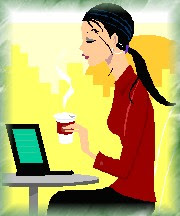
Wiki is a major component of Web 2.0, the emergent generation of web tools and applications (Adie, 2006). Web 2.0 has the potential to complement, enhance, and add new collaborative dimensions to the classroom. Web 2.0 technologies such as blogs, wikis, podcasts, and RSS feeds have been dubbed 'social software' because they are perceived as being especially connected, allowing users to develop Web content collaboratively and open to the public
(Alexander, 2006).
Investigating the mortality rates for the sinking of the Titanic Project can be accessed via
http://www.raghda.pbwiki.com
 Audience/context description
Audience/context description
All students studying Mathematics and History to correlate both subjects by the integration of ICT. Students with low literacy skills, ESL students and students with learning difficulties they may have difficulty with mathematical/ history terminology
Catering to students with a range of learning styles ~
Sociological
The students whom benefit greatly from group activities, the collaborative element of the web technology caters for their needs.
Auditory
Some students learn best by listening, so participating in the vodcast over and over again will enable them to cater for their needs.
Visual
Visual learners benefit from a variety of ocular stimulation such as images and written information. They like to be able to read instructions or the text on their own to increase their understanding.
Tactile
Most people learn best with hands-on activities, but some gain a lot more from it than others. Some students really increase their learning potential when they are given the opportunity to do something by themselves.
Software
From the many wiki software packages available, peanut butter (Pb) wiki was chosen. This is a particularly simple to use example, incorporating features allowing comparison of previous versions, discussion pages, and user authentication, with the additional important features that it was free and that settings could be managed so only invited members could edit the content. These features are important because the teacher wants the groups to take ownership of the wiki without public interference, and wants to be sure that the content had been produced like discussion and results by the students without outside help. It is also important to the teacher that they could track who had made which edits and comments and so identify the authors of any abusive or offensive posts and take appropriate action
Online technologies to be used
Blogs
Wikis
Vodcasting
Navigation links
Google Docs
References Adie, C. (2006). Report of the information services working group on collaborative tools.
http://www.is.ed.ac.uk/content/1/c4/10/46/CollaborativeToolsAndWeb2%200.pdfAlexander, B. (2006). Web 2.0: A new wave of innovation for teaching and learning? Educause Review, 41(2)
http://www.educause.edu/ir/library/pdf/ERM0621.pdf


